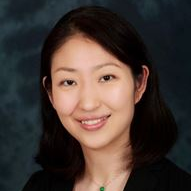Engineering of Oral Biofilms
A special issue of Bioengineering (ISSN 2306-5354). This special issue belongs to the section "Biochemical Engineering".
Deadline for manuscript submissions: 20 June 2024 | Viewed by 2296
Special Issue Editors
Interests: oral microbiology; biofilms; drug discovery
Special Issue Information
Dear Colleagues,
The human oral cavity is one of the most diverse microbial ecosystems in the human body, harboring over 700 bacterial species and 100 fungal species as well as viruses and protozoa. It is unique because of its various niches where microbes colonize and form biofilms. Biofilm formation on the hard surfaces of the teeth and the soft tissue of the oral mucosa is a dynamic process of microbial colonization and extracellular polymeric matrix development. Complex polymicrobial interactions within the biofilm as well as the environmental factors determine the oral health outcomes. This Special Issue establishes a platform for discussions on the engineering of oral biofilms to enhance the advancement of its derived applications in dentistry and related oral biological disciplines, where interventional strategies for diagnosis, treatment, and prevention will be utilized to tackle detrimental biofilms and utilize beneficial biofilms in the oral cavity.
This Special Issue invites original research covering various fundamental and applied aspects of oral biofilm engineering and welcomes review articles reporting state-of-the-art developments, current limitations, and future perspectives.
Addressed topics include but are not limited to the engineering of:
- Dental plaque biofilms, periodontal biofilms, denture-associated biofilms, dental implant-associated biofilms;
- Bacterial biofilms, fungal biofilms, mixed-species biofilms;
- Studies on genes and proteins important for the regulation of oral biofilm formation;
- Novel engineering approaches to detect and control biofilm infections.
Dr. Kassapa Ellepola
Dr. Yuan Liu
Guest Editors
Manuscript Submission Information
Manuscripts should be submitted online at www.mdpi.com by registering and logging in to this website. Once you are registered, click here to go to the submission form. Manuscripts can be submitted until the deadline. All submissions that pass pre-check are peer-reviewed. Accepted papers will be published continuously in the journal (as soon as accepted) and will be listed together on the special issue website. Research articles, review articles as well as short communications are invited. For planned papers, a title and short abstract (about 100 words) can be sent to the Editorial Office for announcement on this website.
Submitted manuscripts should not have been published previously, nor be under consideration for publication elsewhere (except conference proceedings papers). All manuscripts are thoroughly refereed through a single-blind peer-review process. A guide for authors and other relevant information for submission of manuscripts is available on the Instructions for Authors page. Bioengineering is an international peer-reviewed open access monthly journal published by MDPI.
Please visit the Instructions for Authors page before submitting a manuscript. The Article Processing Charge (APC) for publication in this open access journal is 2700 CHF (Swiss Francs). Submitted papers should be well formatted and use good English. Authors may use MDPI's English editing service prior to publication or during author revisions.
Keywords
- antibiofilm agents
- antibiofilm strategies
- beneficial biofilms
- extracellular biofilm matrix
- multispecies biofilms
- quorum sensing
- stress and acid tolerance
- fungal biofilms







